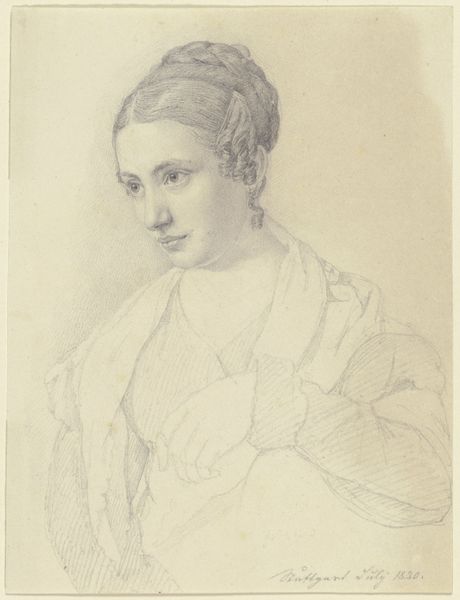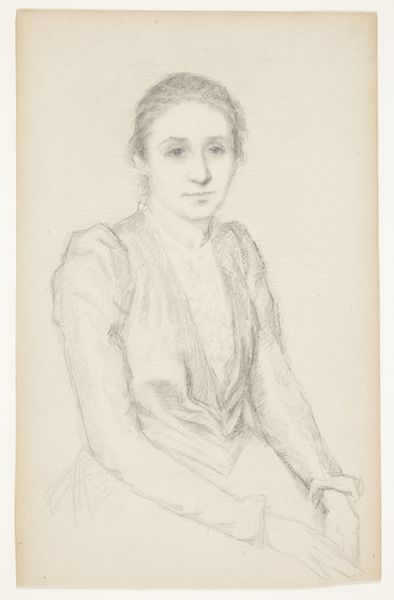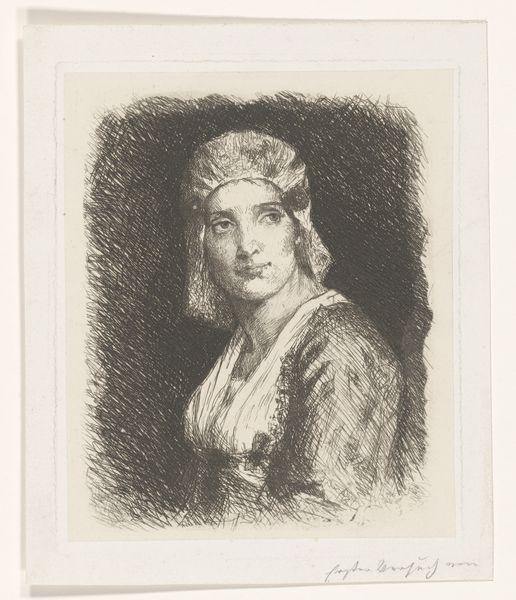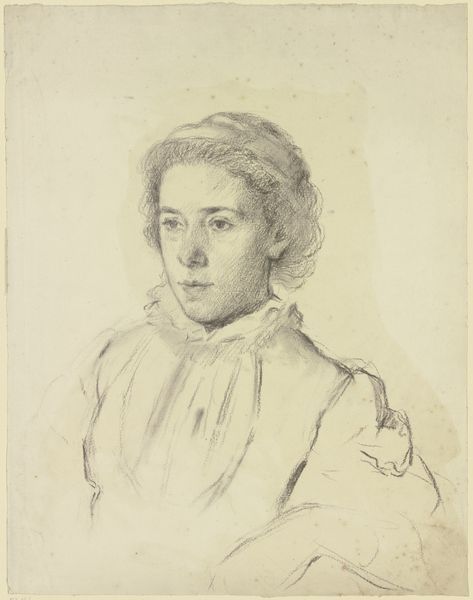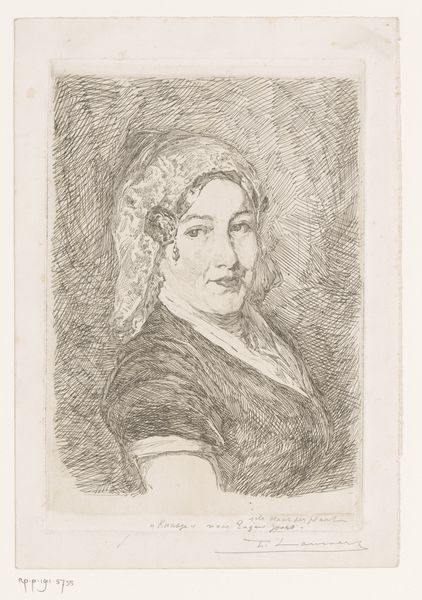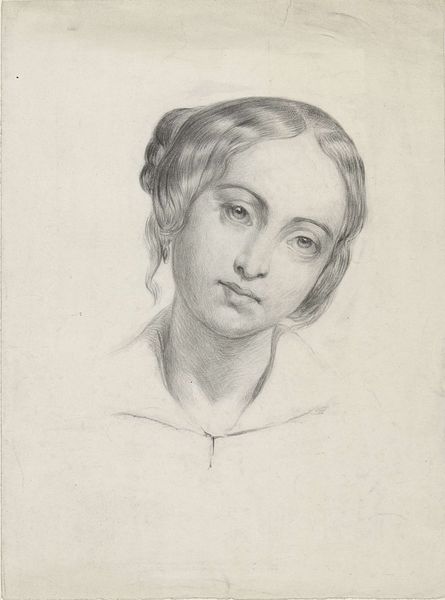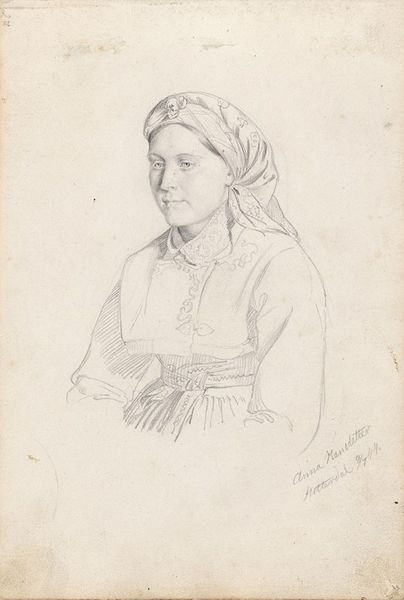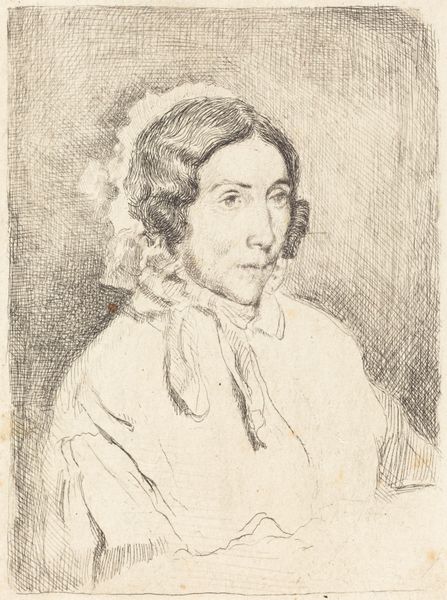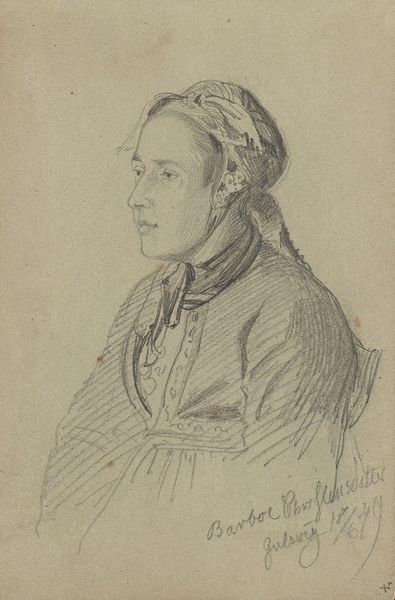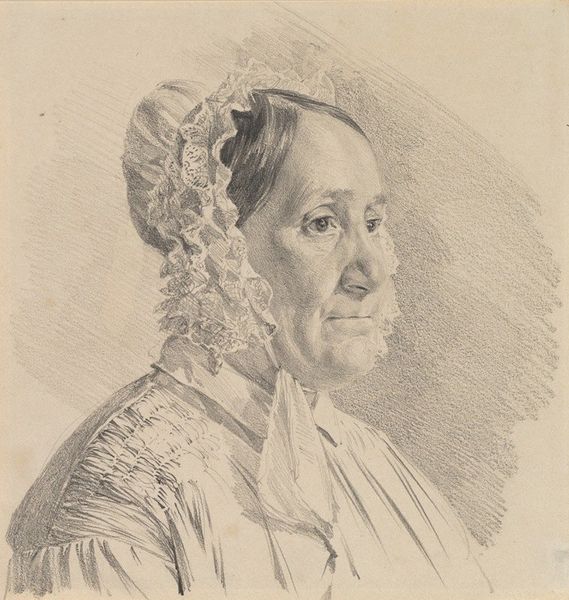
drawing, print, etching
#
portrait
#
drawing
# print
#
etching
#
pencil drawing
#
portrait drawing
Copyright: National Gallery of Art: CC0 1.0
Paul Adolphe Rajon created this etching of Suzanna Rose in 1861 using a metal plate and acid. Etching is an indirect intaglio process. The plate is covered with a waxy, acid-resistant ground. The artist then scratches an image into the ground with a needle, exposing the metal. When the plate is immersed in acid, the exposed lines are "bitten," creating grooves. The longer the plate stays in the acid, the deeper the lines become, and the more ink they will hold. The act of etching, then, is not about physically forcing an image into being, as with engraving, but rather setting up a chemical reaction and letting it do the work. It's a subtle art of control and release, very different from other reproductive processes. The resulting print offers a soft, velvety texture that captures the delicate details of Suzanna Rose's features and lacy bonnet. Considering the material properties and the etching process, we gain a deeper appreciation for its artistic skill.
Comments
No comments
Be the first to comment and join the conversation on the ultimate creative platform.
